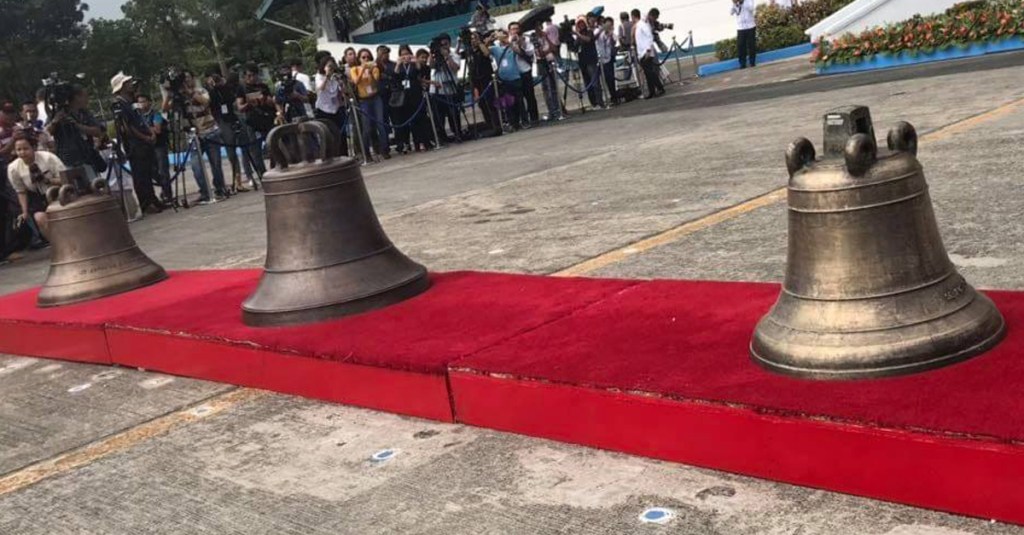It was Sept. 27, 1901, and C Company of the 9th U.S. Infantry Regiment was stationed in the area Samar in the Philippines, specifically the town of Balnagiga. It was during the evening watch that the unit sentries noticed an unusual number of irregularly clothed women heading into the local church with baby-sized coffins. After a search revealed the coffins were carrying children killed by cholera, he let them pass on.
They should have checked closer.

The United States had occupied the Philippines since it was wrested from Spanish control during the 1898 Spanish-American War. The people of the Philippines at first welcomed the Americans as liberators. As soon as they realized U.S. colonial ambitions, however, they turned on the Americans, launching an almost four-year long insurgency they would lose, becoming a U.S. possession until 1946.
Even after rebel leader Emilio Aguinaldo surrendered to the U.S. in April, 1901, the fight wore on in places like Samar. The Americans stationed there should have been ready for anything.

Filipino insurgency leader Emilio Aguinaldo reports aboard the USS Vicksburg as a prisoner of war.
(U.S. Army)
During that September night in 1901, the small coffins really were filled by children, presumably killed by a cholera epidemic that was sweeping the villages of the area. The inspecting sentry looked into one of the coffins, saw what was there, and even helped the woman nail the lid down again when he was finished. If he had looked underneath the corpse, he would have found cane-cutting blades hidden under the body.
All the coffins were filled with them.

James Mattis and Philippines Ambassador Jose Manuel G. Romualdez shake hands in front of the Bells of Balangiga display at F.E. Warren Air Force Base in Cheyenne, Nov. 14, 2018. The ceremony in Wyoming signaled the start of an effort to return the bells to the Philippines.
(Wyoming Army National Guard photo by Sgt. 1st Class Jimmy McGuire)
The next morning, the Americans went to breakfast as the local police chief sent his prisoners to work in the streets. As an American sentry, Adolph Gamlin walked by the Chief in the plaza, the Chief, Valeriano Abanador, grabbed Gamlin’s rifle, butt-stroked the private across the face and unloaded it into the men in the mess tent. The town church bells began to ring, signaling the attack on the surprised American company.
Two guards posted at the entrance to the local convent were killed by locals. The Filipinos then broke through, into the convent, and killed the unit’s officers. Simultaneously, the Bolo fighters began an assault on the local barracks. The locals had gotten the drop on the Americans, but the victims had one advantage — there weren’t enough attackers to get them all.
Some Americans in the mess tent and barracks escaped the initial surprise, regrouped, and retook the municipal hall where their arms were held. Now armed, the tide turned in favor of the Americans. Behind the Filipinos, Pvt. Adolph Gamlin (the sentry) regained consciousness as well as his rifle, and was wreaking havoc in the attackers’ rear. Gamlin had the whole plaza as a field of fire, and the attackers had no cover to hide behind.
Abanador was forced to pull his insurgents out.

The bells arrived in Wyoming sometime in 1904.
Company C collected their dead, 48 of 74 men were killed in action. A further 26 were wounded and eight of those men would die later of those wounds. Not able to hold the town with their reduced numbers, they escaped by sea. The Filipinos could not hold the town either. They returned to bury an estimated 26-36 of their dead and then faded away before the Americans could come in and punish them.
The 11th infantry arrived in Balagiga on Oct. 25, 1901, and found the buried Filipinos. They burned the town and took the church bells, sending two of them to Fort Russell, now F.E. Warren Air Force Base. A third bell ended up with the 9th Infantry at Camp Red Cloud in South Korea.

A solider poses with the third Bell of Balangiga at Camp Red Cloud, South Korea, ca. 2004.
The bells were ordered to be returned to the government of the Philippines by Secretary of Defense Jim Mattis. On Dec. 11, 2018, a U.S. Air Force C-130 landed in Manila, carrying the bells back to the people of the Philippines 117 years after they were taken as war booty by the U.S. Army.


























